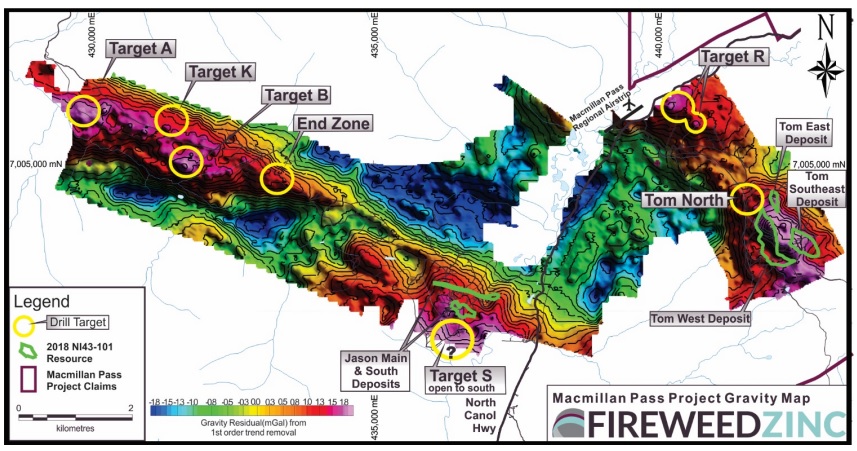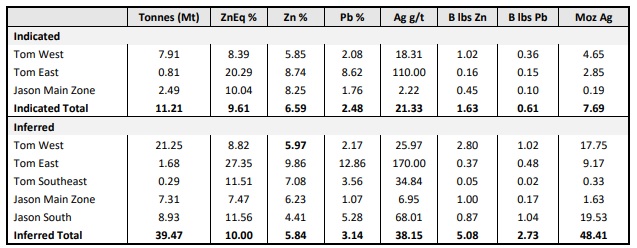
While the zinc prices are currently low and the TC/RC charges high, these are two issues that are completely out of Fireweed Zinc’s (FWZ.V) hands, and the only thing the company can do is just focus on its project and how to create value through exploration and engineering.
At Tom North, Fireweed has increased the drilling activities from three holes to seven holes as Fireweed is testing a potential extension to the Tom West resource which currently contains almost 8 million tonnes at 5.85% zinc and 2.1% Pb in the indicated resources and just over 21 million tonnes at 5.97% zinc and 2.17% lead in the inferred resource category.

As 7 of the 12 holes were assigned to the Tom West zone, the other targets were the subject of just one hole (one step-out hole at Tom West to follow up on the high grade feeder mineralization, one step-out hole at Tom East to follow up on a high-grade interval that was encountered in 2018 and one hole (RC) to drill-test Target R based on a soil anomaly and gravity magnetic highs) although two holes were punched in the Jason North zone, which has never been drilled before.
Fireweed has now moved the drill rig to Target A and Target G, and we expect to see initial drill results quite soon.
Continuing to improve its understanding of the base metal mineralization is one of the few things Fireweed Zinc is able to do. Additionally, it has been working on a plan to further increase the head grade that goes into the mill as this would A) improve the operating efficiency and B) reduce the total amount of ore that would effectively have to be milled. The preliminary XRF ore sorting test work that was conducted on the lower-grade Boundary zone (part of the Nidd property) appears to indicate ore sorting could be a useful feature as the first test work reports the head grade of the rock that gets processed in the mill could double to 5% Zn (there is no resource estimate on the Boundary zone, but previous exploration results returned thick intervals with 224 meters containing 2.5% zinc and 0.3% lead as eye-catcher) while only 15% of the contained zinc would get ‘lost’ during the sorting process.
Those are great results as this basically means the mill would have to process 50% to 70% fewer tonnes while only losing 15% of the zinc. Collateral damage, as the capex and opex savings will be worth a multiple of the unrecovered zinc and successfully applying an ore sorting technique could mean the difference between unviable rock (2.5% Zn and 0.3% Pb) and valuable ore (with a head grade of 5% zinc).
The zinc price and TC/RC charges are outside of Fireweed’s control and the only thing the company can do right now is to just continue advancing the property to add value.
Disclosure: The author has a long position in Fireweed Zinc.

